Becoming a parent, especially a mother, is one of the best things on earth. The whole pregnancy was also your whole preparation for welcoming your new addition to the family. You will be the most excited one, expecting to see this little human being you’ve waited for for nine months.
Not all pregnancies go as planned. As a parent, you may wonder what to do and ask yourself, What Can I Do if My Child Suffered a Birth Injury in a Hospital, and what you can do to get compensation.
Today, we will understand the possible reasons and know what to do if your child suffers from a birth injury.
Most Common Causes of Birth Injuries
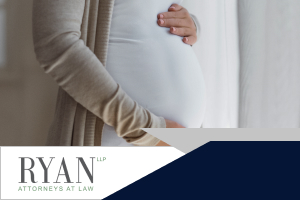
The birth process is often dangerous and fatal for babies who suffer birth injuries because of medical mistakes. This can be because they come into this world with an injury from their own lives, but sometimes it happens that way no matter what happened during pregnancy or beforehand- like when you’re born!
The following are the most common causes of Birth Injuries:
Oxygen Deprivation or Hypoxia
A shortage of oxygen in a baby before, during, or after birth is called hypoxia, birth asphyxia, or hypoxic-ischemic encephalopathy (HIE). In some instances, newborns are born with low oxygen levels, and these children may experience symptoms such as irritability, restlessness, or even fits.
Because hypoxia can cause significant and irreversible birth damage, medical practitioners should always look for indicators that the baby isn’t getting enough oxygen. This includes looking for signals before, during, and after the kid’s birth.
Medical professionals will want to check your baby to indicate they aren’t getting enough air during their earliest moments outside the womb because hypoxia can cause significant damage, which could lead to permanent disability!
Trauma and Excessive Force
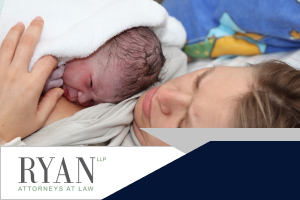
Birth injuries are caused by mechanical stress. It occurs when your baby is subjected to extreme physical force before or during delivery. Mechanical trauma, such as birth trauma, can result in hypoxia, morbidity, and fatality, depending on the severity and anatomic location of the damage. Some of these injuries heal with little or no repercussions, while others cause chronic damage and significant morbidity.
Some birth injuries, unfortunately, are fatal. Permanent birth injuries can significantly impact your child’s life and your family’s future.
Delayed C-Section Delivery
Cesarean delivery (c-section) is a frequent surgical operation that involves opening the mother’s abdomen and uterus to deliver the baby. During an attempted vaginal delivery, a cesarean section is performed as an emergency operation. Emergency c-sections are usually ordered during labor and delivery in response to problems or evidence of fetal distress.
Since it is a well-known fact that medical malpractice and blunders during labor and delivery cause a high percentage of many birth injuries, one of the reasons is the delay of C-section delivery. Many brain damage is linked to the failure to schedule a c-section or the negligent delay in performing an emergency c-section.
Meconium Aspiration Syndrome

Meconium aspiration syndrome (MAS) is a potentially serious medical condition that develops during childbirth when a baby inhales meconium and amniotic fluid. It is when a newborn inhales meconium (the baby’s first stool) and amniotic fluid (the fluid surrounding the unborn baby).
What causes MAS is the same as what causes meconium discharge in the womb. MAS occurs when a newborn expels meconium and subsequently inhales it. Typically, a newborn doesn’t produce meconium till after birth. Fetal stress or placental anomalies often cause early meconium discharge. Fetal distress in late pregnancy is almost invariably related to oxygen shortage or decrease.
The term “meconium” refers to a baby’s first poop. It can occur before, during, or following labor and delivery.
Most Common Types of Injuries
Extremely large fetuses may result in a difficult delivery, posing a risk of damage to the baby. The most common birth injury cause is the natural forces of labor and delivery. During the childbirth process, damage caused by physical pressure, most commonly during transit through the birth canal, is known as birth injury.
The following are the most common types of birth injuries:
Head or Brain Injury
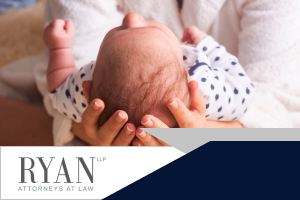
A child can also suffer from brain or head injuries after birth. A baby suffering from a brain or head injury may necessitate lifetime medical care and cannot possibly function as it should have.
Facial Nerve Injury
The facial nerve is also known as the seventh cranial nerve. It may be damaged before or during delivery. The lack of controllable (voluntary) muscle action in an infant’s face owing to pressure on the facial nerve soon before or during birth is known as facial nerve palsy, or Bell’s palsy.
This injury is most commonly caused by medical malpractice, rough treatment by doctors, and the improper use of forceps. Many children will recover control over their facial movements, but others are affected for life.
Forceps or Vacuum Injury
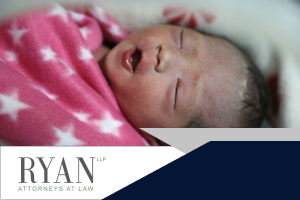
Compared to vacuum-aided deliveries, forceps deliveries are associated with a higher risk of facial nerve injury. The negligent use of forceps can result in retinal hemorrhage and cephalohematoma. In a 2020 study, women who had a forceps-assisted delivery experienced higher pelvic floor injuries than those who had a vacuum-assisted delivery.
It’s possible that during a difficult vaginal birth, the baby will need more than just typical pushing to get out. OB/GYNs have several instruments at their disposal to help with delivery. A vacuum extractor or vacuum pump is a commonly used obstetrical instrument. The suction helps the mother expel by gently moving the fetal vertex through the delivery canal.
But suppose vacuum-aided deliveries went wrong. In that case, they could result in certain types of birth injuries, which can be severe or minor.
Cerebral Palsy
Cerebral palsy can develop if the brain receives little oxygen or suffers severe head trauma during labor and delivery. Birth complications such as placental detachment, uterine rupture, or issues with the umbilical cord during delivery can cut off a baby’s oxygen supply, resulting in cerebral palsy.
Cerebral palsy is a neurological disorder marked by delayed motor skill development, weak muscles, and muscle spasms. Cerebral palsy can affect vision, hearing, learning, and speech challenges. Cerebral palsy is often caused by birth trauma. Inadequate labor monitoring, birth procedures, and inability to monitor fetal distress create extreme hypoxia episodes, which can cause cerebral palsy. Cerebral palsy curbs a child’s muscle control. It is also associated with speech and other developmental milestone delays.
Collarbone or Clavicle Fracture

Clavicle fractures, also known as collarbone fractures, are neonates’ most common birth injuries. A clavicle fracture happens when the collarbone breaks due to a difficult delivery or birth trauma. This injury is particularly usual when a baby’s shoulders are stuck behind the pelvis of the mother. This phenomenon is also known as shoulder dystocia.
When the baby’s shoulder is difficult to deliver or when the baby is born breech, the clavicle may break. When a baby’s clavicle is fractured, the arm on the side of the fracture is rarely moved. Healing, on the other hand, happens swiftly. A solid bump on the clavicle forms as new bone forms in the first ten days after surgery. Limiting movement of the arm and shoulder with a soft bandage or splint may be beneficial if the fracture is painful.
Oxygen Deprivation
When a baby’s brain doesn’t get enough oxygen before, during, or after birth, hypoxia occurs, resulting in brain damage. If not treated effectively, it can proceed to a lifelong condition like cerebral palsy, cognitive deficits, or hypoxic-ischemic encephalopathy (HIE).
Brain damage can result from a lack of oxygen during delivery. As a result of this brain damage, cerebral palsy or chronic seizures may develop. Brain damage can occur when a doctor fails to monitor the baby during and after birth. Or, it can happen when the baby is left in the birth canal for too long. Even mild oxygen deprivation might result in physical difficulties and intellectual deficiencies.
Erb’s Palsy

Erb’s palsy is muscle weakness in the arm or shoulder caused by a birth injury or later in life. It’s widespread among babies who were born with injuries to their shoulders. Some cases can clear up on their own, but doctors may recommend activities to help prevent lasting stiffness.
An excessive pulling or straining of an infant’s head and shoulders during a difficult or prolonged birth is a common cause of Erb’s palsy. Erb’s palsy can occur if an infant’s head and neck are dragged to the side as the shoulders pass through the birth canal.
Spinal Cord Injury
Because of the importance of the spinal cord, damage to the baby’s spine is frequently diagnosed shortly after birth. Signals from the brain to the rest of the body pass through the human spinal cord. As a result, even minor anomalies in your baby’s spinal cord might have serious repercussions. These occurrences are rarer than ever, thanks to advancements in prenatal care. Complications in delivery, however, can result in spinal cord injury.
Signs and Symptoms of a Birth Injury

The severity of birth injuries in neonates ranges from severe and easily observable to lesser and more challenging to detect or diagnose. Bruising, strange eye movements, muscle weakness or paralysis, excessive fussiness, and convulsions are possible birth damage signs. Some indicators may not be seen until the youngster reaches adulthood.
Inform your doctor right away if your child feels something is amiss with your baby. A birth injury diagnosed and treated early can save your child from experiencing many more symptoms in the future.
Here are some of the symptoms you should watch for:
- Problems with development (developmental milestones)
- Deficits in cognition
- Challenges in behavior
- Tremors
- Extreme exhaustion
- Excessive irritability or lethargy, poor sleeping, poor visual attention, poor feeding
- Lack of muscle control
- Difficulty controlling the legs and arms; having trouble rolling over, crawling, or sitting up; cannot lift the head
- Seizures, bladder and bowel control problems, impaired vision, hearing loss, abnormal pains and sensations
Although not all birth injuries can be treated, early intervention can benefit. For example, a novel treatment involving chilling a brain-damaged newborn for several days reverses a lot of the damage that causes symptoms.
You Can File a Birth Injury Claim for Compensation
We understand how heartbreaking it can be if you or your infant has been subjected to negligent treatment or wounded due to medical malpractice during pregnancy or delivery. The results can be life-altering or even fatal in some situations.
Due to medical misconduct, some babies will be afflicted to have medical care for the rest of their life. A viable option to seek compensation from those who caused your child’s injuries is to file a birth injury claim.
A birth injury compensation claim is a legal claim made on behalf of a child who has been injured during or shortly after delivery. Several elements may be considered in a compensation claim. If you’re considering submitting a claim, keep account of all the costs associated with the birth injury and the expected future costs to your family.
With the help of birth injury attorneys, you have a greater chance of winning compensation to aid you in your expenses for your child care.
A Compensation Claim Covers Your Damages

A compensation claim may cover all of your expenses related to your child’s birth injury and resulting medical disabilities or conditions:
- Past and future medical expenses
- Therapy
- Home care
- Assistive devices
- Travel expenses for treatment and appointments
- Lost earnings
- Educational and behavioral interventions
Birth Injury FAQs
When Am I Eligible to File a Claim for My Child’s Birth Injury?
Suppose you believe your child is harmed due to birth injury malpractice during the birthing process. In that case, you may be entitled to financial compensation or file a claim for your child’s birth injury to cover your child’s medical expenses.
If your kid was injured due to preventable mistakes made before, during, or immediately after delivery, you might be able to file a lawsuit. You may also talk to a birth injury attorney to determine if you have a valid claim. A lawyer will scrutinize your case for free and conclude if your child’s injury is caused by medical malpractice and negligence.
What Is My Birth Injury Claim Worth?
The average medical negligence claim for a child under one-year-old is around $1 million. While an average can be helpful for comparison, the value of your child’s claim may differ dramatically. It is dependent on the circumstances of your case.
The lawyer will seek compensation for your child based on the following factors:
- The level of negligence involved;
- The severity of your child’s injuries and the problems that have resulted;
- Current medical bills;
- All anticipated future treatment, care, therapy, and assistive device costs;
- Wages lost due to missed work;
- Pain and suffering;
- Your child’s loss of independence.
When Can You File a Birth Injury Claim?
Filling a birth injury claim is vital. If you want to have faster results, you may consider acting quickly as soon as you see those signs that your child has suffered a birth injury during birth at the hospital.
This time restriction is usually established at two or three years. To prevent missing the deadline, speak with a lawyer soon away about your birth injury cases.
To get the justice your family deserves, contact a qualified lawyer as soon you can. A birth injury attorney will help guide you through every step of this complicated process and ensure that medical professionals are held accountable for any wrongdoing.
Contact a Birth Injury Lawyer to Help With Your Child’s Birth Injury Case

It is critical to find a birth injury lawyer who has successfully helped previous parents win compensation for their child’s avoidable injuries.
The experienced birth injury attorney at Ryan Injury Lawyers is ready to help you with your legal claim. Our injury lawyers have a total legal experience of more than 50 years. Our goal is to help each client better understand their alternatives and represent them in court if needed. We provide a free consultation in person, via phone, text, or video conference to discuss potential claims. To schedule a consultation, call (216) 600-0308, text (216) 367-9089, or fill out our online contact form. Contact a professional medical malpractice attorney right away for advice on how to proceed. Time is of the essence, as there are strict deadlines to follow claims. So don’t delay. Call today.
Get a free case review today to understand more about your legal options.
